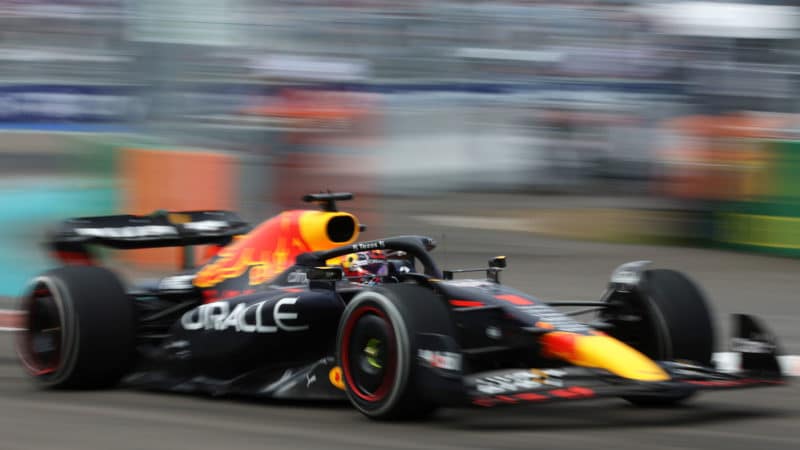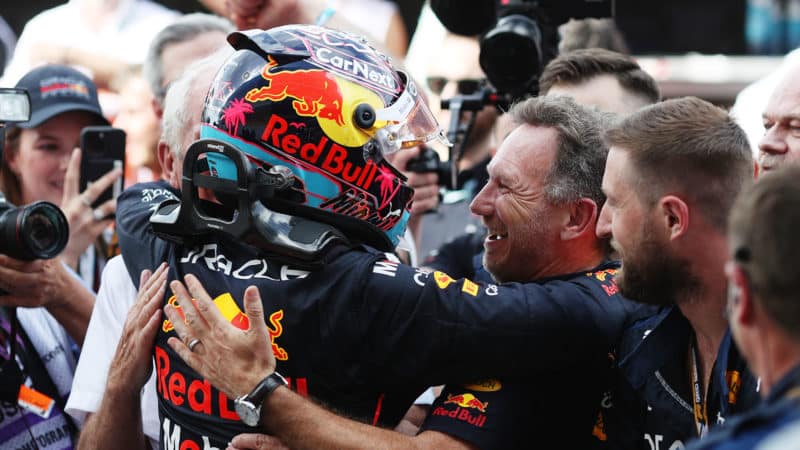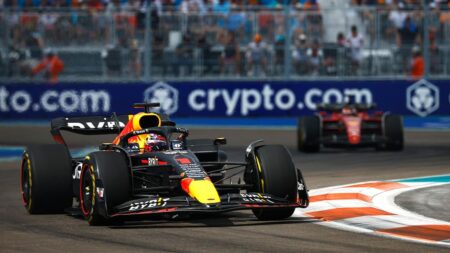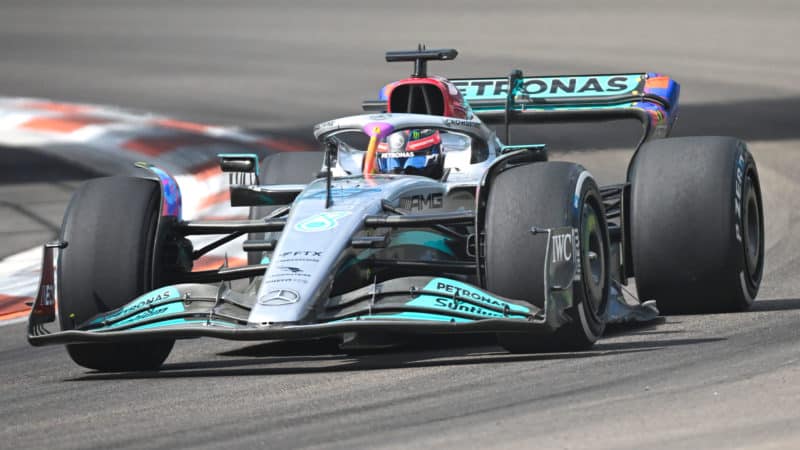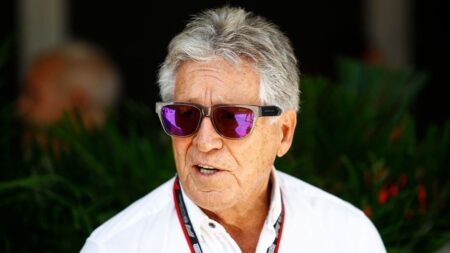But, as Horner pointed out, Ferrari did not have a new set of mediums to bolt on. Had they gone for softs, Leclerc would probably have passed Verstappen but the tyres would have been chocolate after a couple of laps and he’d have been re-taken. Ferrari had a decent read on that from Esteban Ocon, who had started out of position and run a long opening stint on hards before fitting softs on lap 41. He was blisteringly fast for a couple of laps and then the rubber went away.
The other option, new hards, would have taken too long to warm-up and in rolling the dice, the Ferraris could have facilitated a Red Bull 1-2.
George Russell had started out of position relative to his potential car performance after a disappointing qualifying (he was mystified as to why his Q2 time was slower than his session-topping FP2 lap!) and ran a long 40-lap opening stint on hards. As soon as he pitted, opening up a stop window behind Perez, Red Bull pulled Sergio in on the next lap and fitted the fresh set of mediums Horner had talked about.
The Ferraris, therefore, would have been trying to warm up hard compound Pirellis for the final few laps, while Perez was right behind them on relatively fresh mediums with still formidable straight-line speed despite an estimated 25bhp deficit from an earlier sensor problem. Probably quite rightly, the Ferrari pit wall didn’t fancy that.
Advantage Red Bull or Ferrari?
Imola and Miami has pointed to Red Bull having a more raceable package than Ferrari, allowing Verstappen to start whittling down Leclerc’s very handy early season championship advantage. And people are starting to question whether Ferrari will – or indeed can – alter their fundamental set-up approach to trade some downforce for additional top speed.
